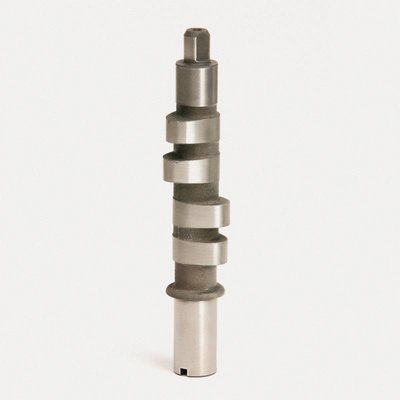BMW had asymmetrical cam lobes at one time. Asymmetrical in the sense of timing i.e. indexing of the lobe apexes relative to each other. However, this may also not be unique to BMW.


Keep in mind the "complex" runner reference. It could be that, due to runner shape, a follower or rocker is used on one of the valves which contacts the camshaft at an atypical location i.e. not beneath the camshaft, but at the side or top. If there was no space available directly beneath the camshaft for a traditional bucket and spring arrangement, due to runner shape, such components could be relocated to the side of, or on top of, the camshaft. This would require 'asymmetrical' or out-of-phase lobes.
Another interpretation may be rocker arms, generally. Both valves operated by rockers; no asymmetry. BMW have used cam operated rockers on motorcycle heads before. Again, not unique to them.



This potentially frees up space underneath the camshafts and can permit greater valve inclination angles. There is precedent elsewhere:


The piston crown could either partially form the prechamber or contain an internal passage that aligns with the injector at TDC. Either way, the injector would spray into the piston/combustion chamber prior to TDC. At and near TDC, the piston geometry ensures that only a small volume is available for the injector to spray into: the prechamber.hurril wrote: ↑13 Jan 2018, 14:01I know, right? I've wondered that from the start and the only thing that seems possible is for the injector to create a denser cloud close to the holes in the pre-chamber and then hope that enough of it gets sucked/ pushed in there by the compression. (The pressure gradient is evened out/ lowered so that it is equal on both sides of the "membrane" that the holes form, thereby pulling the fuel with it.)amho wrote: ↑12 Jan 2018, 21:23I always thought that the injector is placed in the top of prechamber, but If injector is in exhaust side (as motor fan pic. indicates) how do they have rich mixture in the prechamber? there might be multiple injection first one when piston is near tdc to mainly fill prechamber?
https://drive.google.com/open?id=1tpCUl ... SY3ZJV5gNa
There seem to be so many concurrently active factors that go in to this though and it's not that easy to form a working picture of all of them I think.

